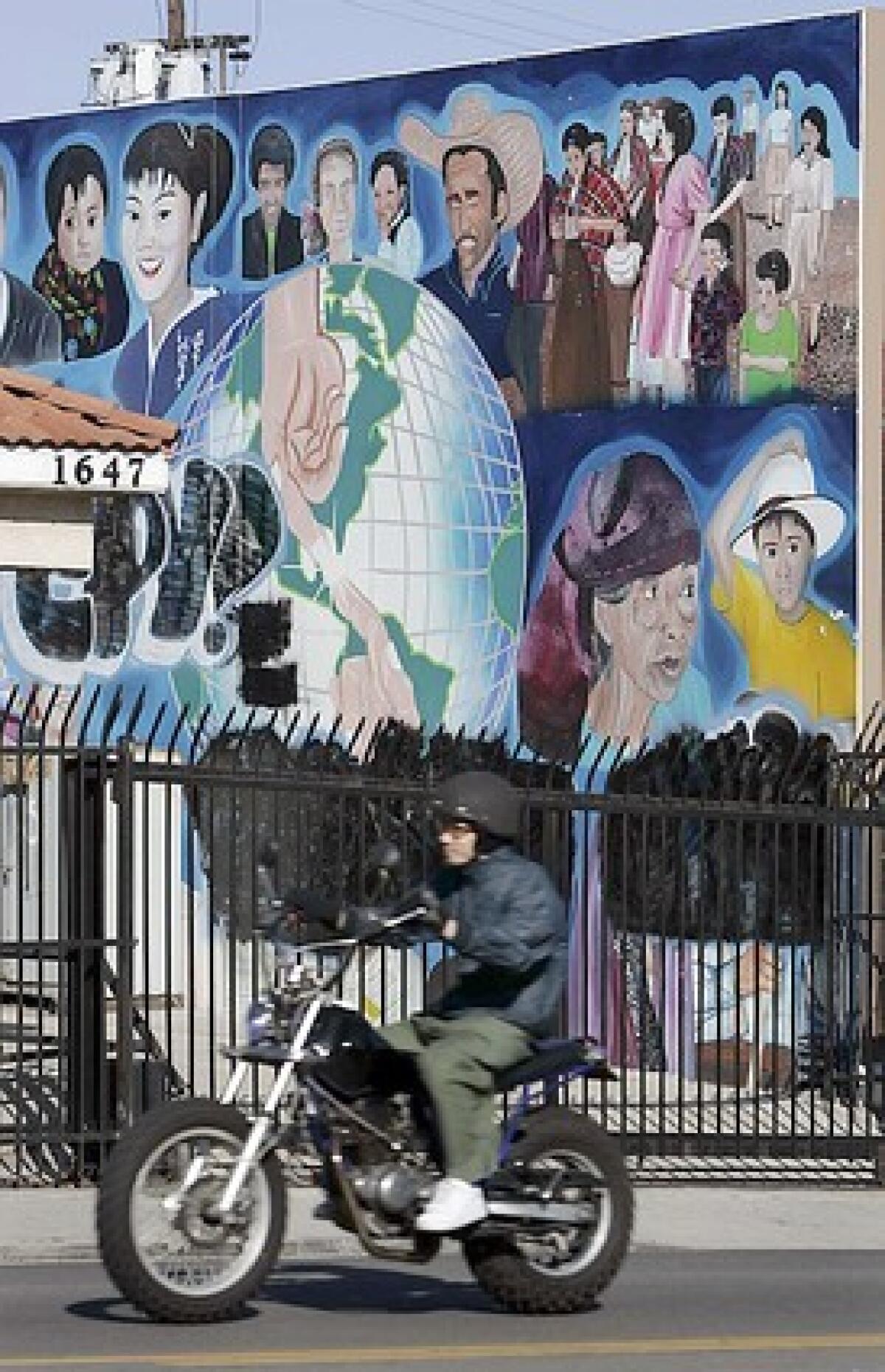A shared identity

- Share via
More a cultural hub and place of the heart for Filipino Americans than a neighborhood where most hang their hats, Historic Filipinotown — or Hi-Fi, as locals call it — is now home primarily to Latinos. Yet Filipinos still gather there for commemorations, camaraderie, singing and folk dancing or some down-home cooking at Bahay Kubo restaurant.
Beginnings
In 1920s L.A., when the first wave of immigration from the Philippines began, many of the newcomers settled in what now is the historic district, bounded by the 101 Freeway, Hoover Street and Glendale and Beverly boulevards. In the 1940s, Filipinos began purchasing homes in the 2.1-square-mile district, where restrictive covenants did not apply. Another surge of immigrants arrived in the ‘60s.
Today, immigrants from the Philippines often settle in Eagle Rock, Long Beach or Carson.
What it’s about
How’s this for a melting pot? Amigos Market, in the heart of Hi-Fi, is owned by Tom Yoon, a Korean. His clientele, he says, is mostly Latino.
Designated “Historic Filipinotown” by the Los Angeles City Council in 2002 to spotlight the area’s heritage, its Philippine population makes up only 15% of the residents. At least 65% are Latino.
But Filipinos maintain a presence. In addition to the restaurants, markets and medical facilities that draw Filipino Americans, there are murals along Beverly Boulevard, including one by artist Eliseo Art Silva titled “A Glorious History, A Golden Legacy,” which chronicles the Filipinos’ history in America.
Drawing card
Filipino Americans maintain their ties with fellow immigrants through the myriad social, political and service organizations in Historic Filipinotown, such as the Filipino American Community of Los Angeles, of which retired physician Jose B. Baldonado serves as president.
A great spot for Filipinos to reconnect, the center also reaches out to the neighborhood’s other ethnic groups, says Baldonado, who immigrated here in 1986.
“We host ballroom dancing for Filipino residents,” Baldonado said, “and rent out the hall for quinceaeros for Latinos. Everyone’s welcome here.”
Insiders’ viewpoint
Iluminada Dimapilis, 73, arrived in Hi-Fi in 1974, rented an apartment and worked at clerical jobs within an easy commute by bus. Retired now, she has remained in the district because of her close ties to her church and because of the enclave’s proximity to downtown and shopping.
“I started by myself here and survived,” Dimapilis said. “There weren’t many social services for immigrants then. Now there are many. I feel connected to my homeland in this neighborhood.”
Emilia Basat, 74, followed her husband here in 1992, five years after he emigrated. She and Dimapilis meet every Friday at the local Filipino-American Service Group — a social-service agency that houses the Filipino American Library — to socialize, sing old songs and kick up their heels with other folk dancers.
Housing stock
The area has a mix of mostly small, pre-1950s single-family homes, apartments and more recently built condos. There are 918 single-family detached homes, 146 condominium units and 6,958 apartments in buildings with four or more units.
Housing turnover is relatively low, said Paul Argueta, an agent at Las Casas Realty in Highland Park. There recently were 21 homes listed for sale, priced from $439,000 to $1.1 million.
Report card
Historic Filipinotown is part of the Los Angeles Unified School District. Student scores on the 2006 Academic Performance Index Growth Report were 820 out of a possible 1,000 at Commonwealth Avenue Elementary, 729 at Plasencia, 710 at Rosemont Avenue, 682 at Union Avenue and 630 at Gratt; 654 at King Middle School and 580 at Virgil; and 580 at Belmont High School.Historical values
Residential resales:Year...Median Price
1990...$125,0001995...$132,500
2000...$135,000
2005...$450,000
2006...$595,000
diane.wedner@latimes.com
Sources: DataQuick Information Systems; api.cde.ca.gov; becerra.house.gov/HoR/CA31/DistrictPage/HistoricFilipinotown.htm lmu.edu/csla/community/students_projects/philipino<252>

